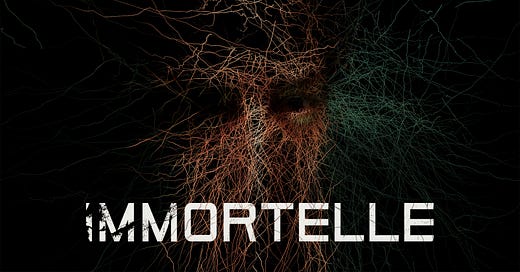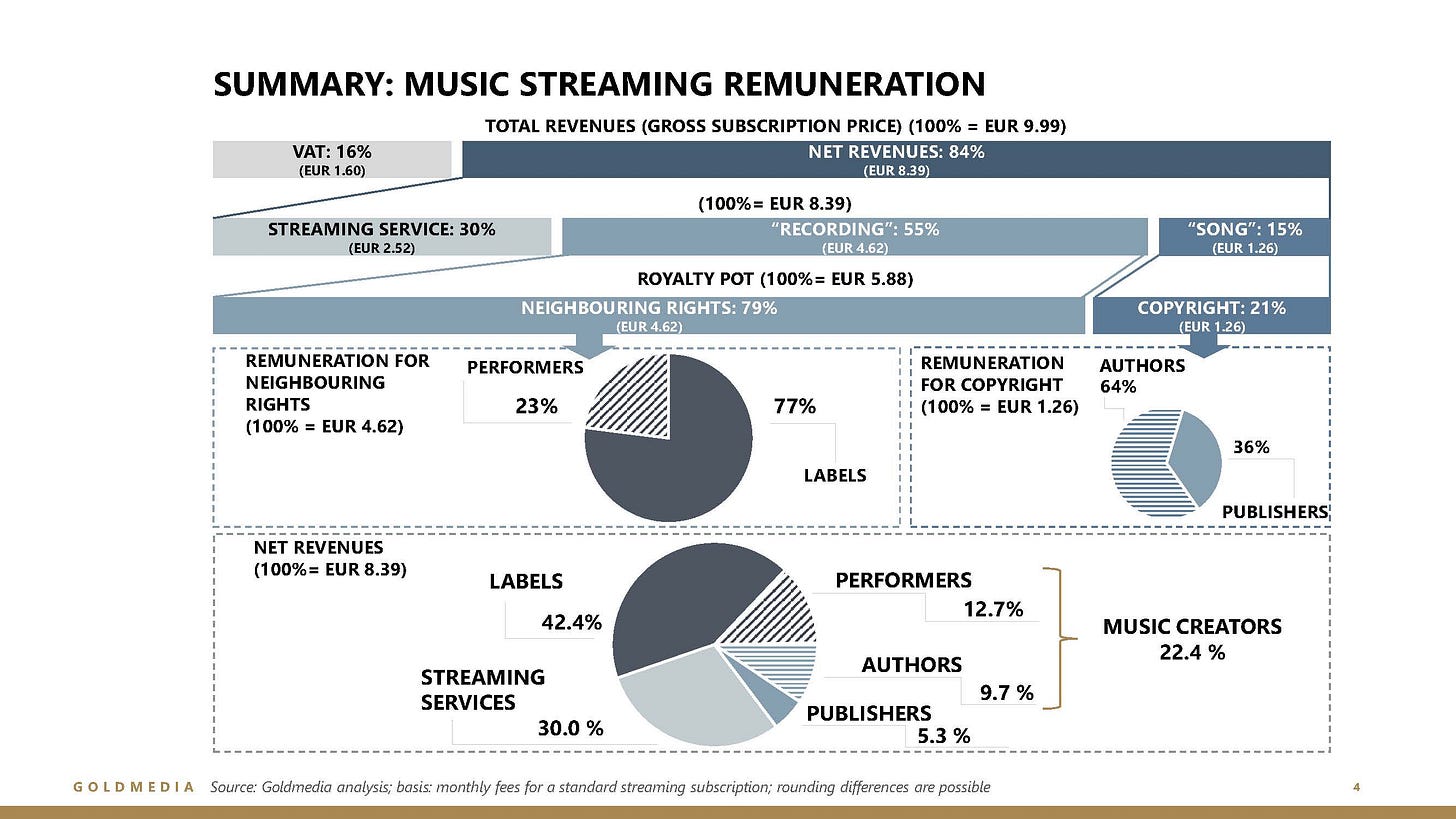✘ Artists have a responsibility to engage with new tools & tech
And: Recommender System Optimization; Artist-Market Fit; Lil Nas X brings Augmented Reality on tour; Music streaming revenue in Germany; Mobile game Beatstar pays out $16m to rightsholders
The digital and analogue worlds are coming together in increasingly strong ways. This leads to a massive contradiction in opportunities versus expectations for artists. On the one hand, there’s an entire collection of technologies waiting to be discovered and experimented with - all with the potential of offering up new mediums for musical expression and untapped business models. On the other hand, the gluttony of technology also means that there’s an endless cascade of new music coming out and an increasing pressure to distinguish yourself as an artist by telling your story through new tech. In other words, there are currently many ways for artists themselves to sit at the table where directions for use of new tech get created. This is important, because during previous technological upheavals in the music industry, artists were very far from the boardroom tables where men decided what was to be next.
Engage and experiment
The only way for artists to understand new tools is to create with them. This means learning a new language and shifting their focus from existing modes of creation. This can be liberating, but also terrifying. But if the artists themselves don’t explore, then who will? An answer would quickly turn into big tech companies and those boardrooms past.
In search of new modes of storytelling, expression, and world building, there is a responsibility for artists to try the new things. However, they can’t do it alone, it’s necessary for some form of institutional support to exist to create the space to experiment. We - in the sense of the broader music industry - can say that artists have a responsibility to engage with new tools, but then we must also make sure that the right circumstances exist for this engagement to take place. Especially with the recent focus on the creator economy and finding a smallish group of fans to support an artist’s music, there’s a danger to ask too much.
VR as a case study
Access to technologies gets easier and cheaper over time. If you want to develop a VR experience there’s free versions abound or SAAS-based subscription models to help you get started cheaply. However, in the end it requires quite a financial injection to buy a headset, learn to use software, etc. When there’s a desire - or responsibility - to experiment, there’s also a need to create a space to allow that experiment to happen. VR is a tool to redefine audiovisual experiences. One artist who has recently explored this is Line Katcho. She studied piano and electro-acoustics. Then, she started playing with graphic software. This led to her compositions finding amplification through visual expressions.
Katcho was part of a cohort of artists who were commissioned by the digital festival MUTEK to recreate a previously presented work at the festival into a VR work - called the Immersive Collection. While the artist, of course, still had to do the hard work related to creativity and learning how to express that in a new medium - this was Katcho’s first work for VR - it’s commendable that the festival creates the space and support system for artists to do this kind of work. It’s part of the mandate that MUTEK has, but pushing boundaries and creating the systems for others to push boundaries are two very different things.
The work Katcho, and the other artists involved, have created will also be given distribution pipelines. You can, for example, already find the work Katcho created - Immortelle - on Steam and soon also on Astrea. It’s this kind of long-term commitment from an institution to an artist that helps the latter best engage their sense of play.
Why VR - Immortelle
Katcho’s original audiovisual work is an intense interplay between the audio and the visual. The latter reacting to the former to draw the viewer/listener into the work. However, this sensory overload happens on a projection screen - a 2D experience happening in front of the spectator. Working with the headset and in Unity 3D, Katcho soon realised that she had to deprogramme her mind to think about the concept of VR, to think about this concept of having eyes all around. New medium, new tool, new conceptual approach.
Immortelle, then, is still related to its original sister, but also a totally different artwork and experience. While the sensory experience of VR for the user meant Katcho had to rein in parts of the visual intensity, it also opened up a whole new compositional element. We all tell stories, and the canvases we use to tell those stories matter. We experience the world around us in 2D when we look out at it, but this turns into a 3 dimensional representation. This is also partly because when we listen, we are at the centre of the world around us. It’s in the combination of seeing and hearing that we have 3D experiences. Within VR, and Immortelle is a great example of this in practice, there is more of an opportunity to engage with the physical element in audiovisual composition. VR allows artists to bring in bodily sensations and rhythms into their music and visuals. There, in other words, a totally different sense of intimacy when working with VR than other audiovisual media.
Responsibility
If there’s a responsibility, there’s also an expectation. What that expectation is, is important to define. When I say that artists have a responsibility to engage with new tools and technologies, the expectation is experimentation. Art rarely does what you want it to do and artists are already pulled in many different directions. Properly engaging with new tools requires having the set up to do so. This, we cannot expect artists to have or create on their own. There, we need to build the rails for experimentation that will allow artists to keep pushing the boundaries of what a musical and audiovisual experience can be.
LINKS
🔧 Towards Recommender System Optimization. Part 1: Our Vision and Our Data Tool for Algorithmic Optimization on Streaming Platforms (Dmitry Pastukhov)
“In other words, you need to understand how your music is recommended today and set goals in terms of how your music should be recommended in the future. That means that you have to be able to query into and analyze Spotify's embedding space — for simplicity's sake, think of it as "that candidate pool algorithm." But, of course, there's no way to access that shared model directly. However, if you study both the outputs and inputs of that model, you can get an approximation of it. That was the initial thought behind the project we started about a year ago — a project aiming to finally provide artists and their teams with an insight into the black box of streaming recommendations.”
✘ Very valuable work that brings actual value to people in our current age of streaming.
🚀 How Lil Baby Found Artist-Market Fit and Took Off (Denisha Kuhlor)
“Lil Baby’s continued success comes from his propensity to adapt alongside his early-stage partner, Quality Control. For many tech founders, there’s a critical inflection point when they need new leadership to take the company to its next phase. These founders often stay involved in a reduced capacity, making way for a new CEO to scale the company and make room on the board for later-stage investors.”
✘ Interesting take on the notion of the artist as CEO of a startup
🧨 Lil Nas X Becomes Second Artist to Bring Augmented Reality to His Tour (Lyndsey Havens)
“Snap’s in-house creative team, Arcadia, partnered with the creative team behind Lil Nas X — Hodo Musa and Saul Levitz — to create cohesive these thematic visuals, which are geofenced to the venue at every tour stop, making them exclusive to attendees. For fans who want in but may not be at the show, Snapchat also developed a lens that adds butterfly wings to a user’s selfie.”
✘ Slowly, but surely, our digital and analogue world continue to mesh together.
💸 Music Streaming in Germany - Revenue situation in the German streaming market 2022 (Goldmedia)
“Music creators, i.e. musicians and authors together, receive about 22% of the net revenues. The share of music creators is thus significantly below the revenue share of the streaming services (30%) and the labels (42%).”
✘ It’s so important to have these hard figures about how streaming revenues break down.
💓 Mobile rhythm game Beatstar paid out $16 million to music rightsholders in its first year (Mandy Dalugdug)
“With its appeal to early players of Guitar Hero and to Gen Zs, Beatstar has shared $16 million of its income with music rightsholders (across both labels and publishing), whose recordings and songs the game relies upon.”
✘ That gaming offers a significant new revenue source for music is known, and here’s evidence of it. But considering the pay-out structures with streaming, how much is ending up with the musicians, composers, producers, authors? Is that 22% again?
MUSIC
One riddim, one record. The Bug collaborates with some amazing artists - Justin Broadrick, Jaimie Branch, Dälek, and more - while using a single riddim to build out each track. The record is basically 17 different versions of this single riddim as imagined by The Bug with a different vocalist. It’s intense and beautiful, brooding and magical.






Not an artist but a creator :) and here are my 2 cents.
I thought about this for so long. Because I try a lot of new platforms and tools for myself, and eventually I came to conclusion that most of the platforms that I have tried really don't care about creators.
This is my personal experience below.
I register, go to their discord server contribute to the platform engage in conversations. Everything that any user can and should do. They listen and engage with my experiences, make events invite me to those events I talk on those events bla bla bla. All in all, I spend a big amount of time there and share a lot of resources.
Then usually one of a few things happen:
- they onboard a big creator that brings "legitimacy" to their platform and build a platform specifically for their needs.
- they take all that feedback and again make a platform for specifically big creators, and price the platform accordingly.
- they take the feedback and just do nothing with it but build an image of "creator-first" platform because "see how many people are talking on our discord server".
And maybe my bad experiences outshine the good ones here, but it's just exhausting. Being pro creator(artist) means actually building for them, not for a specific subset of people.